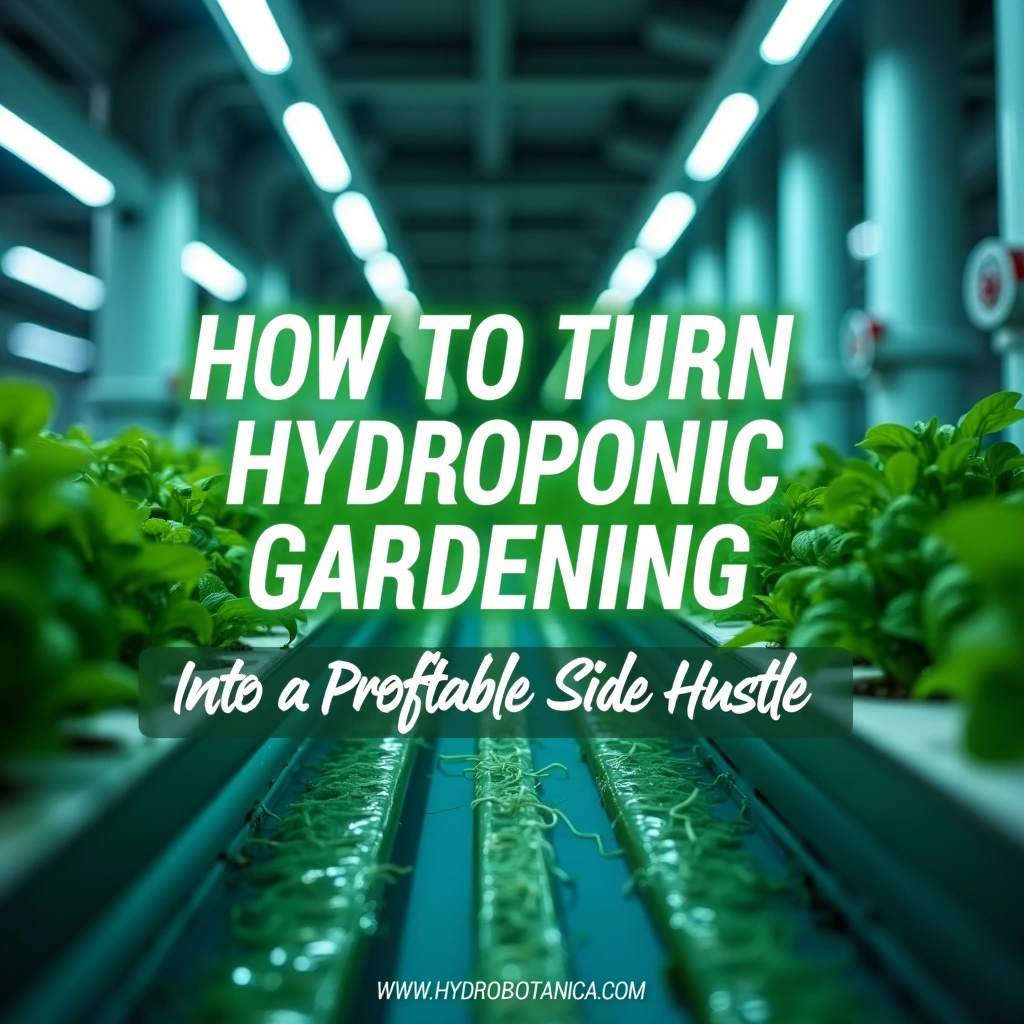Have you ever wondered how to start a hydroponic gardening business from home with minimal upfront costs? Hydroponics isn’t just a hobby—it’s a booming industry offering scalable income for urban farmers and eco-conscious entrepreneurs. With the global hydroponics market projected to reach $18 billion by 2028, there’s never been a better time to turn your green thumb into a revenue stream.
This guide merges innovative hydroponic techniques with entrepreneurial strategies, showing you how to build a low-risk, high-reward side hustle. Whether you’re growing herbs in a studio apartment or running a compact urban farm, you’ll learn to maximize yields, minimize costs, and tap into profitable markets. Let’s dig in!
Understanding Hydroponics: The Foundation of Your Side Hustle

What is Hydroponic Gardening?
Hydroponic gardening is the practice of growing plants without soil, using nutrient-rich water solutions instead. Unlike traditional gardening, which relies on unpredictable soil quality and weather, hydroponics offers precise control over plant nutrition and environment. Popular systems include:
- Nutrient Film Technique (NFT): A continuous flow of nutrient solution over plant roots.
- Deep Water Culture (DWC): Plants float in oxygenated water with dissolved nutrients.
- Aeroponics: Roots are misted with nutrients, using 95% less water than soil farming.
Why It’s Perfect for Entrepreneurs: Hydroponics grows plants 30–50% faster than soil, produces higher yields, and uses 90% less water. Plus, vertical systems let you grow 10x more food per square foot—ideal for urban spaces.
Benefits of Hydroponics for Entrepreneurs
- Year-Round Production: Grow strawberries in winter or basil in a basement.
- Space Efficiency: A 4×4 ft system can yield 80 heads of lettuce monthly.
- Premium Pricing: Hydroponic produce sells for 20–30% more at farmers’ markets.
- Sustainability Appeal: Attract eco-conscious buyers by reducing water waste and carbon footprints.
Setting Up Your Hydroponic System for Profit

Choosing Affordable Hydroponic Systems
Your setup costs will make or break profitability. Here’s how to start lean:
DIY Systems for Beginners
The $50 Kratky Method (Passive Hydroponics):
- Materials Needed: A 5-gallon bucket, net pot, growing medium (clay pebbles), nutrient solution.
- Steps:
- Fill the bucket with nutrient solution.
- Place seedlings in the net pot, ensuring roots barely touch the water.
- Refill only once as plants consume the solution (perfect for leafy greens).
PVC NFT System (150–150–200):
- Use PVC pipes angled at 3–5° for gravity-fed nutrient flow.
- Add a submersible pump for continuous circulation.
Long-Tail Keyword Integration: “Affordable hydroponic systems for a home business” can generate 200+ monthly searches, making DIY guides a traffic magnet.
Essential Equipment & Nutrient Management
- Must-Haves:
- Grow Lights: LED full-spectrum lights (80–80–200) for year-round growth.
- pH Meter: Maintain a 5.5–6.5 pH range for optimal nutrient absorption.
- Nutrient Solutions: Masterblend or General Hydroponics Flora Series ($30/month).
Pro Tip: Start with leafy greens (lettuce, kale) or herbs (basil, mint)—they’re forgiving and have quick turnover (4–6 weeks).
Business Planning: From Garden to Income

Market Analysis & Niche Selection
High-Demand Crops for Profit
- Microgreens: Sell for 25–25–50 per pound to restaurants or at farmers’ markets.
- Gourmet Herbs: Basil, cilantro, and parsley fetch 3–3–5 per ounce.
- Medicinal Plants: CBD-rich hemp or holy basil for wellness markets.
ROI Example: A 10-tower vertical system growing lettuce can yield 800 heads/month. At 2/head,that’s∗∗2/head,that’s∗∗1,600/month** gross revenue.
Legal and Financial Considerations
- Business Structure: Register as an LLC (50–50–200) to protect personal assets.
- Permits: Check local regulations for food production licenses.
- Budgeting:
- Startup Costs: 500–500–2,000 (system, seeds, nutrients).
- Monthly Costs: 100–100–300 (electricity, water, nutrients).
Case Study: Sarah’s Urban Basil Co.
Sarah grows 200 basil plants in a 100 sq ft closet using DWC systems. She sells 150 bunches/month to local pizzerias at 5each,netting∗∗5each,netting∗∗750/month** after expenses.
Marketing Your Hydroponic Business Online

Digital Marketing Strategies
Content & Social Media Tactics
- Blogging: Write posts like “10 Tips for Marketing Your Hydroponic Gardening Business Online” to rank for long-tail keywords.
- YouTube: Film time-lapse videos of plant growth or tutorials on mixing nutrients.
- Instagram & Pinterest: Post vibrant photos with hashtags like #UrbanFarming and #HydroponicLife. Tag local chefs or health stores.
Local SEO & Community Engagement
- Google My Business: Optimize your profile with keywords like “hydroponic lettuce near me.”
- Farmers’ Markets: Partner with local vendors to cross-promote.
Advanced SEO Tactics for Long-Term Growth
On-Page Optimization
- Schema Markup: Add FAQ schema for questions like “How much does a hydroponic system cost?”
- Internal Linking: Link to related guides (e.g., “Best LED Grow Lights for Indoor Farming”).
Voice Search & Local SEO
Target phrases like “hydroponic gardening side hustle near [City]” to capture voice searches.
Conclusion
Hydroponic gardening is more than a trend—it’s a scalable side hustle with minimal barriers to entry. By starting small, validating demand, and leveraging digital marketing, you can turn a spare room or balcony into a profitable venture.





